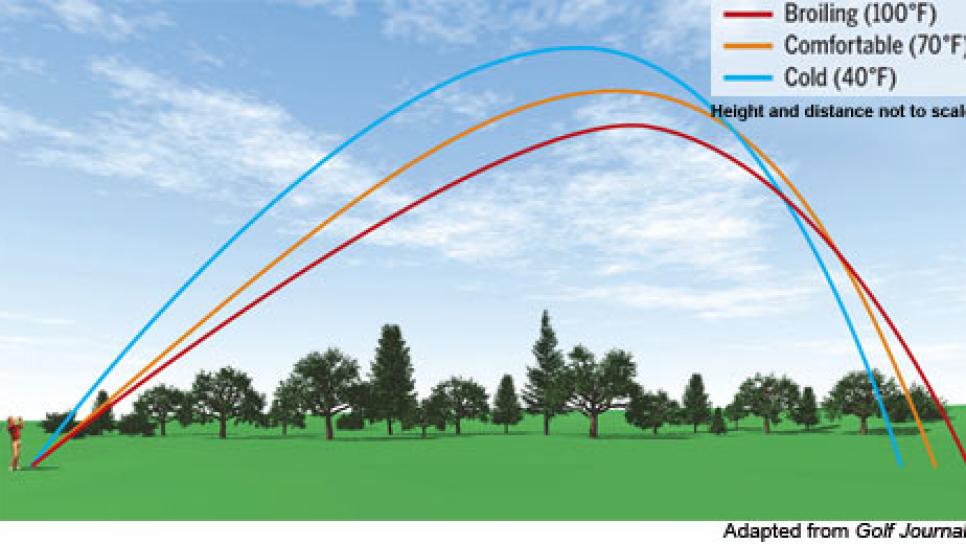News
Weather: A Major Factor

With the 89th PGA Championship heading to Southern Hills CC in Tulsa, Okla., one thing is certain: It'll be hot as blazes. What influence does that have on the world's best players? After attending to sun protection and frequent hydration, players at this echelon must compensate for distance in a manner similar to playing at high altitude. In calm conditions, three variables affect ball flight: temperature, barometric pressure and humidity. With the right combination, hitting a drive in Tulsa (elevation: about 700 feet) can be similar to hitting a ball at 5,000 feet. And for players at this level, who measure their shots to the yard, such variation can cause havoc.
Temperature: Air becomes lighter as temperature increases; warmer air also rises more than cold. That translates into less resistance to ball flight, reducing drag and lift, resulting in lower trajectory and minimizing slices or hooks. According to Golf Journal in Sept. 2002, the mechanical golfer used by the USGA in ball testing, Iron Byron, traditionally generated clubhead speed of 109 miles per hour. At that velocity, carry increases 1.3 yards for every 10 degrees (Fahrenheit). When temperatures exceed 100 degrees, professional golfers swinging around 120 mph can gain as much as 15 yards on a drive versus when it's 70.
Barometric pressure: A drop here makes the air lighter, allowing for longer ball flight. Positioned at 5,000 feet, Iron Byron would pick up 10 yards over the distance achieved at sea level. At Tulsa's elevation the gains are appreciably less, although they could spell the difference between landing next to a flagstick or burying short in a bunker guarding a tucked hole location.
Humidity: A yard or two span between completely saturated to bone-dry air. For elite players seeking distance the goal is shirt-soaking humidity: Dry air is denser and causes more drag, reducing ball flight. (And in case you're wondering, a 15-mph tailwind can tack on six yards for Iron Byron while a similar headwind takes away 14 yards.)